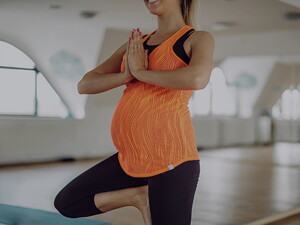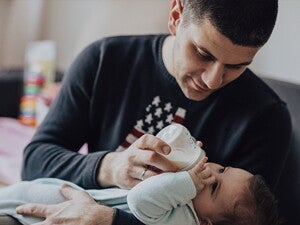Nestlé Baby & me: Your Trusted Resource for Baby Nutrition & Parenting
Browse by life stages
Trending Topics
Trending Articles

Your hospital bag checklist
Not sure what to pack in your hospital bag? We have put together a simple hospital bag checklist with all the essentials.
3 mins to read

How to Soothe a Baby with Colic
Got a fussy baby? Infantile colic is characterized by intense, uncontrolled crying or fussing in an otherwise healthy and well-fed baby. About 20% of babies suffer from colic.
4 mins to read

Getting started: traditional and baby-led weaning
Your baby may be developmentally ready to start complementary feeding at around six months of age, when they are able to hold their head up and sit in a high-chair.
3 mins to read

Healthy pregnancy diet: What to eat and avoid
A healthy, well-balanced diet is beneficial for you and the baby growing in your belly, but some nutrients are critical for the healthy growth and development of your baby.
8 mins to read
Helpful Tools
Article finder
Expert articles and tips about development, parenting support, and nutrition
Ovulation Calculator
Use the ovulation calculator to help increase your chances of getting pregnant and get other expert advice on the best ways to get pregnant.
Due Date Calculator
So, when are you due? It depends on the conception date—but since that’s tough to tell, here’s how to calculate your baby’s expected birthday!
Baby Name Generator
Trying to find the perfect baby name? Get inspiration from our baby naming tool
Your week-by-week pregnancy calendar
Track your pregnancy week by week and learn more about your pregnancy stages, the symptoms, and your baby's development.
Most Popular Products

GERBER Puffs Banana
With a unique star shape, GERBER Puffs are a great choice to help develop baby's pincer skills.

GERBER Organic Apple, Mango, Raspberry, Avocado, with Oats Purée
All delicious, all nutritious organic purée that your little one will love. Made with 1/5 Apple, 3 tsp Mango, 2 ½ Raspberries, ¼ tsp Avocado, ½ tsp Oats.

Gerber® Multigrain Oatmeal & Fruit Baby Cereal (Add Water)
Introduce new flavours and textures to baby as they grow with the next stage of GERBER cereals!
Appropriate for infants 6 months and up.

Nestlé® NIDO® 1+ Nutritional Toddler Drink
Nestlé NIDO 1+ Nutritional Toddler Drink is a milk-based everyday drink specially formulated to help support your child’s growth and development.
Appropriate for toddlers 1 to 3 years

GERBER Puffs Strawberry Apple
With a unique star shape, GERBER Puffs are a great choice to help develop baby's pincer skills.

Gerber® Multigrain, Yogurt & Blueberry Baby Cereal (Add Water)
Introduce new flavours and textures to baby as they grow with the next stage of GERBER cereals!
Appropriate for infants 8 months and up.




















